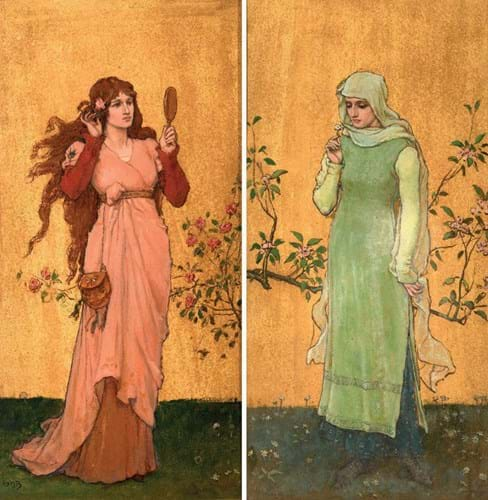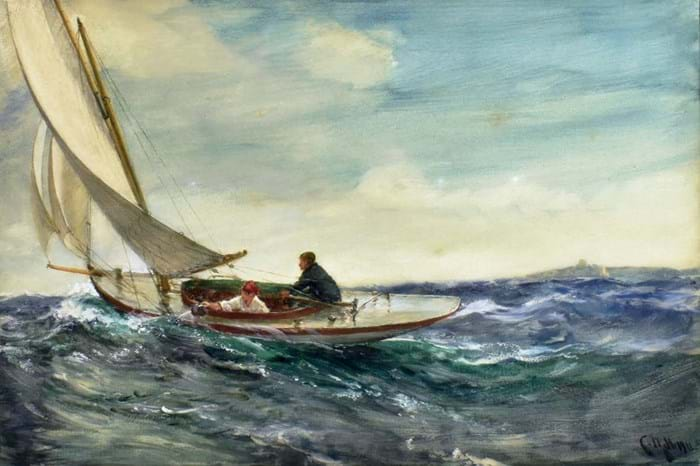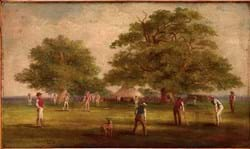The artist produced a varied range of pictures from landscapes to genre scenes but his portraits and figurative studies were highly regarded in particular. Many are now in museums.
Vanity and Modesty, both 22¾ x 11¼in (58 x 28.5cm), were executed in gouache on a sanded gilt ground and inscribed with the artist’s initials.
They had provenance to Paul Magriel (1906-90), an American who formed a wide-ranging collection, especially 19th century watercolours and pastels as well as Italian Renaissance bronzes.
Consigned from a private collection in Somerset, they came to auction at Lawrences (25% buyer’s premium) of Crewkerne on January 18. While the less familiar style, subject and medium made them something of an unknown quantity, a number of parties did not deem the £800-1200 guide excessive for an artist whose best works can make five-figure sums.
They were sold at £4400 to the London trade.
Hemy out yachting
A gouache of a rather different type attracted even stronger competition against a lowly estimate at another Somerset saleroom on February 2.
The seascape by Charles Napier Hemy (1841-1917) offered at Greenslade Taylor Hunt (19.5% buyer’s premium) was a fairly typical work by the marine artist and appeared to be an example of one of his sketches which he frequently developed into larger and more carefully worked oils. The largest and most finished examples can make up to around £10,000 but many tend to sell in the low thousands and occasionally they can be acquired for sums in the hundreds.
Titled The Little Yacht, Falmouth, the 18in x 2ft 3in (46 x 68cm) gouache at the auction in Taunton was initialled CNH and dated 1911 to the lower right. It came with provenance and a sales invoice to York Gallery of Tunbridge Wells from where it had been purchased for £2000 in 1988.
With seemingly little pressure being applied as to the reserve here, it was pitched at just £200-300 and, after considerable interest emerged, it was eventually knocked down at £4500.
The price was above average for a Hemy work on paper of this size and, adjusting for inflation, was not too far down on the retail value from 35 years ago.
















